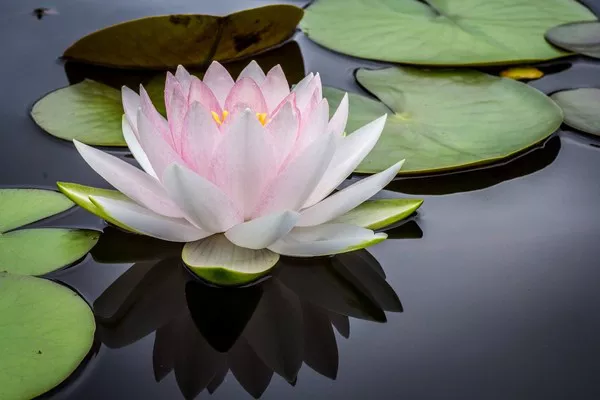Flowers have been used throughout history to convey powerful messages and emotions. They hold symbolic meanings that can evoke feelings of joy, love, remembrance, and even recovery. When it comes to representing the journey of healing and recovery, certain flowers carry significant symbolism. In this article, we will delve into the world of flowers and explore the blossoms that are commonly associated with recovery. By understanding the symbolic representations of these flowers, we can find solace, hope, and inspiration in their delicate petals.
1. The Symbolism of Flowers in Healing
Flowers have long been recognized as a source of comfort and healing. Their beauty, fragrance, and vibrant colors have a profound impact on our emotions and well-being. Flowers play an essential role in various cultural and religious traditions, often symbolizing renewal, growth, and resilience. Understanding the symbolism of flowers allows us to connect with their inherent healing properties on a deeper level.
2. Flowers that Represent Recovery
Several flowers are closely associated with recovery and serve as powerful symbols of resilience, strength, and rejuvenation. Let’s explore some of these blooms and their significant meanings:
Cherry Blossoms: Cherry blossoms are renowned for their ephemeral beauty and profound symbolism. In Japanese culture, they represent the transient nature of life and remind us to embrace the present moment. These delicate blossoms are also associated with new beginnings, hope, and the resilience required to overcome adversity.
Sunflowers: Sunflowers are iconic symbols of positivity, strength, and growth. With their vibrant yellow petals and their ability to follow the sun, they symbolize resilience and the ability to overcome challenges. Sunflowers inspire us to turn towards the light and find strength in the face of adversity, making them an ideal representation of recovery.
Lotus Flowers: The lotus flower is deeply rooted in various spiritual traditions and represents enlightenment, purity, and rebirth. Its ability to rise above muddy waters and bloom beautifully symbolizes the journey of recovery and emerging from difficult circumstances. The lotus teaches us that even in the face of adversity, we can find inner peace and transformation.
Daffodils: Daffodils, with their vibrant yellow and white blooms, herald the arrival of spring and symbolize renewal and hope. These cheerful flowers represent the triumph of the human spirit over challenges and serve as a reminder of the beauty that can emerge after a period of darkness.
Hyacinths: Hyacinths, known for their fragrant blooms, are associated with healing, forgiveness, and spiritual growth. Their vibrant colors and captivating fragrance symbolize the rejuvenation of the mind, body, and spirit. Hyacinths inspire us to let go of past wounds and embrace new beginnings.
Irises: Irises are symbolic of hope, courage, and wisdom. With their diverse colors and intricate petals, they represent the multifaceted nature of the recovery journey. Irises encourage us to have faith in our abilities, embrace change, and trust the process of healing.
3. Flowers in Supportive Contexts
Flowers play a significant role in providing support and encouragement to individuals on the path to recovery. Here are a few ways flowers can be incorporated into supportive contexts:
Hospitals and Healthcare Facilities: Flowers can brighten hospital rooms and create a soothing environment for patients. Bouquets or arrangements featuring flowers symbolizing recovery can uplift spirits and serve as a reminder of the healing journey ahead.
Support Groups and Therapy Settings: Flowers can be used in support group sessions or therapy settings to create a calming and nurturing atmosphere. They can be incorporated into floral arrangements, used as visual aids during discussions, or even incorporated into therapeutic activities like flower arranging or gardening.
Gifts of Encouragement: Sending a bouquet of flowers that represent recovery can be a meaningful gesture to someone going through a challenging time. It can serve as a reminder of their strength and resilience and provide comfort during their healing process.
4. Personal Interpretations and Healing
While certain flowers may carry widely recognized symbolic meanings, personal interpretations of flowers can also hold profound significance in the context of recovery. The journey of healing is unique to each individual, and finding a flower that personally resonates can offer solace and inspiration. It could be a favorite flower from childhood, a bloom encountered during a significant moment, or a flower associated with a loved one. These personal connections can serve as reminders of strength, hope, and the power of resilience.
Conclusion
Flowers possess a remarkable ability to convey profound emotions and symbolize the journey of recovery and healing. From cherry blossoms representing new beginnings to sunflowers embodying resilience, each flower carries its own unique symbolism that can inspire and uplift. Incorporating flowers into supportive contexts and personal interpretations allows us to connect with their healing properties on a deeper level. By embracing the symbolic power of flowers, we can find solace, hope, and strength in their delicate petals as we navigate the path to recovery.


